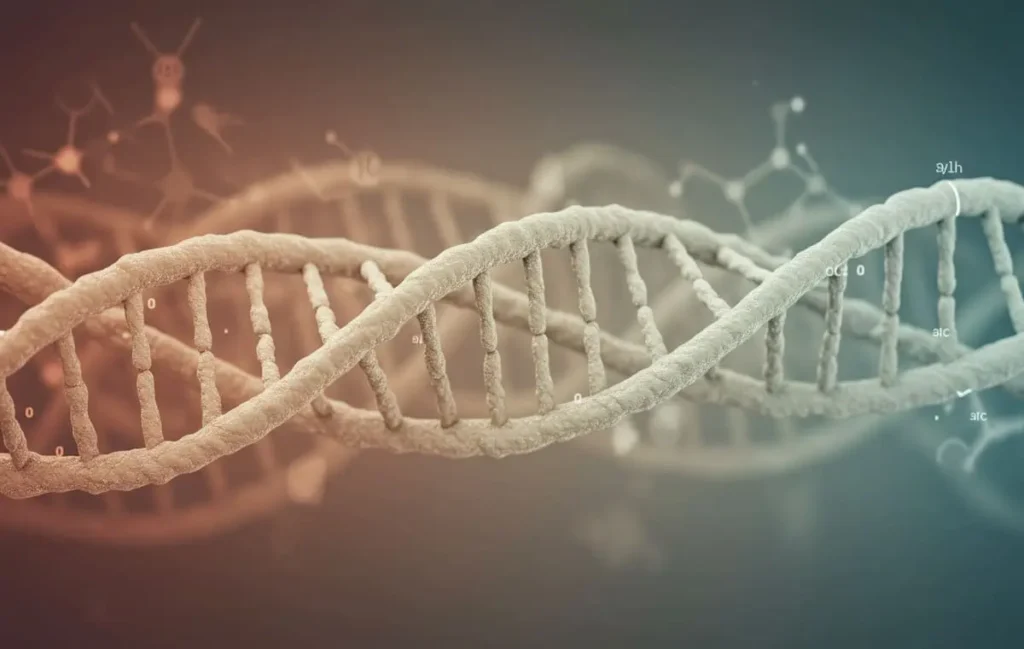Celiac Disease: Your Practical Guide to Diet, Symptoms & Living Well
Understanding Celiac Disease: A Practical Path to Wellness
Celiac (Coeliac) disease. The words alone can sound daunting, conjuring up images of restrictive diets, confusing symptoms, and a life forever altered. If you or someone you know has been diagnosed with this autoimmune condition, you might be feeling overwhelmed, uncertain, and perhaps even a little scared. The journey of understanding and managing this condition can feel like navigating a complex maze.
But take heart. While coeliac sprue is a serious, lifelong condition, it is also entirely manageable. With the right knowledge, resources, and a proactive approach, you can live a healthy, fulfilling, and symptom-free life. The key lies in understanding this chronic digestive disorder, embracing the gluten-free diet, and learning practical strategies for living well with this condition.
This article is your comprehensive yet practical guide to navigating the world of gluten-sensitive enteropathy. We’ll unpack what this condition truly is, explore the often-confusing symptoms, guide you through the diagnostic process, delve into the essential gluten-free diet (the cornerstone of treatment), and provide you with actionable tips and resources to empower you on your path to wellness. Get ready to demystify celiac disease, take control of your health, and discover that a vibrant and fulfilling life is absolutely within reach, even with this small intestine disease.
Table of Contents
What is Celiac Disease? Unpacking the Condition

Defining Celiac Disease: More Than Just a Gluten Intolerance:
It’s crucial to understand that CD is far more than just a food intolerance or a simple allergy. It’s a serious autoimmune disease that affects the small intestine and has far-reaching consequences for overall health. To gain a deeper understanding of this condition and its complexities, consult resources from leading medical institutions. For comprehensive and reliable information on coeliac disease, including detailed explanations of the condition, diagnosis, and treatment, visit the National Institute of Diabetes and Digestive and Kidney Diseases (NIDDK), a part of the National Institutes of Health.
In celiac (Coeliac) disease, the body’s immune system mistakenly identifies gluten, a protein found in wheat, barley, and rye, as a harmful invader. When someone with celiac disease consumes gluten, even in tiny amounts, it triggers an autoimmune reaction in the small intestine.
This autoimmune response damages the villi, the small, finger-like projections that line the small intestine. Villi are essential for nutrient absorption. When they are damaged and flattened by celiac disease (villous atrophy), the body’s ability to absorb vital nutrients from food is significantly impaired. This malabsorption can lead to a wide range of symptoms and long-term health complications.
What Causes Celiac Disease? The exact cause of coeliac disease is not fully understood, but it is believed to be a complex interplay of genetic and environmental factors.
- Genetics: Celiac (Coeliac) disease has a strong genetic component. People with certain genes (HLA-DQ2 and HLA-DQ8) are at a significantly increased risk of developing the condition. However, having these genes does not guarantee that someone will develop this disease, only that they are predisposed.
- Environmental Triggers: Environmental factors are thought to play a role in triggering celiac disease in genetically susceptible individuals. Gluten itself is the primary environmental trigger, but other factors, such as infections, gut bacteria imbalances, and certain life events, are also being researched as potential contributing factors.
Who is at Risk for Celiac Disease?
While celiac disease can affect anyone, certain factors increase the risk:
- Family History: Having a first-degree relative (parent, sibling, child) with celiac (Coeliac) disease significantly increases your risk. This autoimmune condition tends to run in families due to the shared genetic predisposition.
- Other Autoimmune Conditions: People with other autoimmune diseases, such as type 1 diabetes, autoimmune thyroid disease, or rheumatoid arthritis, have a higher risk of developing celiac disease.
- Genetic Predisposition: As mentioned, carrying the HLA-DQ2 or HLA-DQ8 genes increases risk, although genetic testing alone is not diagnostic.
- European Descent: Celiac disease is more common in people of European descent, but it can affect individuals of all ethnicities and backgrounds.
- Age: This chronic digestive disorder can be diagnosed at any age, from infancy to adulthood. Symptoms may appear at different life stages, or even change over time.
It’s important to remember that anyone can develop celiac disease, even without obvious risk factors. If you experience persistent symptoms suggestive of celiac disease, it’s crucial to consult a doctor for proper evaluation and testing.
Recognizing Celiac Disease: Understanding the Symptoms

Celiac disease is notorious for its diverse and often confusing array of symptoms. Symptoms can vary greatly from person to person, and they can affect nearly every system in the body. This variability is why this condition is sometimes called the “iceberg disease” – the easily recognized digestive symptoms are just the tip of the iceberg, with many less obvious or “hidden” symptoms lurking beneath the surface.
Classic Celiac Disease Symptoms: What to Watch for:
The “classic” or more commonly recognized symptoms of celiac disease primarily involve the digestive system. These symptoms arise from the damage to the small intestine and subsequent malabsorption of nutrients. Common digestive symptoms include:
- Diarrhea: Chronic diarrhea is a frequent symptom, often described as loose, watery, and sometimes pale or greasy.
- Constipation: Paradoxically, some individuals with gluten-sensitive enteropathy experience constipation instead of diarrhea. Bowel habits can be erratic and alternate between diarrhea and constipation.
- Abdominal Pain: Abdominal pain, cramping, and discomfort are common, often described as generalized or localized pain in the stomach area.
- Bloating and Gas: Excessive bloating, gas, and abdominal distention are frequent complaints due to malabsorption and inflammation in the gut.
- Nausea and Vomiting: Nausea and vomiting, particularly after consuming gluten-containing foods, can occur in some individuals.
- Weight Loss (or Sometimes Weight Gain): Unexplained weight loss is a classic symptom due to malabsorption. However, some individuals, particularly adults, may experience weight gain or have no weight changes.
- Fatigue and Weakness: Malabsorption of nutrients, particularly iron and B vitamins, can lead to fatigue, weakness, and a general feeling of being unwell.
Symptom Variation in Females: While Coeliac disease symptoms are highly variable in everyone, some research suggests that females may experience certain symptoms more frequently or present differently than males. While more research is needed, some observations include:
- Anemia: Iron-deficiency anemia, often unexplained by other causes, may be more prominent in females with celiac disease due to menstrual blood loss and malabsorption of iron.
- Osteoporosis or Osteopenia: Celiac (Coeliac) disease can impair calcium absorption, increasing the risk of bone density loss. Osteoporosis or osteopenia (reduced bone density) may be diagnosed earlier or more frequently in females.
- Reproductive Issues: Celiac (Coeliac) disease has been linked to reproductive issues in females, including delayed puberty, irregular menstrual cycles, infertility, and increased risk of miscarriage. These symptoms are not exclusive to females but are important to consider in the context of this chronic digestive disorder.
Beyond Digestion: “Hidden” and Atypical Celiac Disease Symptoms:
One of the reasons celiac disease can be challenging to diagnose is that many individuals experience “non-classical” or “extra-intestinal” symptoms that are not primarily related to digestion. These “hidden” symptoms can be easily overlooked or misattributed to other conditions, delaying diagnosis. It’s important to be aware of these less obvious signs of this small intestine disease:
- Anemia (Iron Deficiency): Unexplained iron-deficiency anemia, even without digestive symptoms, can be a sign of celiac disease due to impaired iron absorption in the small intestine.
- Nutrient Deficiencies: Malabsorption can lead to deficiencies in various vitamins and minerals beyond iron, including vitamin D, vitamin B12, folate, and calcium. These deficiencies can manifest in a variety of symptoms related to this autoimmune condition.
- Skin Rashes (Dermatitis Herpetiformis): Dermatitis herpetiformis is an intensely itchy, blistering skin rash that is a specific cutaneous (skin-related) manifestation of celiac disease. It typically appears on elbows, knees, buttocks, and scalp.
- Joint Pain and Muscle Cramps: Inflammation associated with celiac disease can sometimes affect joints, causing joint pain (arthralgia) and muscle cramps or weakness.
- Headaches and Migraines: Chronic headaches and migraines, particularly without a clear cause, have been linked to celiac disease in some individuals.
- Neurological Symptoms: In some cases, Coeliac disease can affect the nervous system, leading to neurological symptoms such as peripheral neuropathy (numbness or tingling in hands and feet), ataxia (problems with balance and coordination), and even seizures in rare cases.
- Fatigue and Brain Fog: Persistent and unexplained fatigue, even with adequate sleep, and “brain fog” (difficulty concentrating, memory problems, mental sluggishness) are common non-digestive symptoms of celiac disease.
- Depression and Anxiety: There is a known link between celiac disease and mental health conditions like depression and anxiety. Chronic inflammation and nutrient deficiencies may play a role in these psychological symptoms of this chronic digestive disorder.
- Dental Enamel Defects: Dental enamel defects, particularly on permanent teeth, such as discoloration, pitting, or banding, can be an early sign of celiac disease in children.
- Mouth Ulcers: Recurrent mouth ulcers or canker sores, especially if frequent or severe, can be associated with celiac disease.
- Growth Problems in Children and Delayed Puberty: In children, celiac disease can interfere with nutrient absorption needed for growth and development, leading to growth problems, failure to thrive, and delayed puberty.
- Reproductive Issues and Infertility: Celiac (Coeliac) disease has been linked to reproductive problems in both women and men, including infertility, recurrent miscarriage, and delayed menarche (first menstruation) in females.
It’s crucial to remember that celiac disease symptoms are highly variable and can mimic other conditions. If you experience persistent symptoms, even if they don’t seem primarily digestive, and especially if you have risk factors for celiac disease, it’s essential to consult a doctor for proper evaluation and testing.
Getting a Diagnosis: Celiac Disease Testing

If you suspect you or your child may have celiac disease based on symptoms, seeking a proper diagnosis from a doctor is essential. Self-diagnosis or starting a gluten-free diet before testing can make accurate diagnosis difficult or impossible for this small intestine disease.
When to Suspect Celiac Disease & Seek Testing:
Consult your doctor and discuss Coeliac disease testing if you or your child experience:
- Persistent Digestive Symptoms: Chronic diarrhea, constipation, abdominal pain, bloating, gas, or unexplained weight loss.
- Unexplained Nutrient Deficiencies: Iron-deficiency anemia, vitamin deficiencies (e.g., vitamin D, B12).
- Skin Rash (Dermatitis Herpetiformis): Especially an intensely itchy, blistering rash.
- Family History of Celiac Disease: Having a first-degree relative with celiac disease increases your risk.
- Other Autoimmune Conditions: If you or your child has another autoimmune disease (type 1 diabetes, thyroid disease, etc.).
- Growth Problems or Delayed Puberty in Children: Unexplained growth delays or pubertal delay.
- Any of the “Hidden” or Atypical Symptoms: Even without prominent digestive issues, consider testing if you experience unexplained fatigue, brain fog, neurological symptoms, joint pain, or other non-classical symptoms.
Celiac Disease Tests: Blood Tests & Endoscopy:
Diagnosing Coeliac disease typically involves a combination of blood tests and an endoscopy with biopsy: celiac disease test
- Blood Tests (Serology Tests): These are usually the first step in Coeliac disease diagnosis. Blood tests measure antibodies in the blood that are elevated in people with celiac disease when they are consuming gluten. The most common blood test is the tissue transglutaminase IgA antibody test (tTG-IgA). Other antibody tests may also be used.
- Positive Blood Test: A positive blood test suggests celiac disease is likely, but it is not diagnostic on its own and needs to be confirmed by endoscopy.
- Negative Blood Test: A negative blood test makes celiac disease less likely, but it doesn’t completely rule it out, especially in certain situations (e.g., IgA deficiency).
- Endoscopy with Biopsy: Endoscopy with small intestinal biopsy is considered the gold standard for diagnosing celiac disease. During an endoscopy, a thin, flexible tube with a camera is inserted through the mouth and into the small intestine. Small tissue samples (biopsies) are taken from the lining of the small intestine and examined under a microscope to look for damage to the villi, which is characteristic of celiac disease.
- Positive Biopsy: A biopsy showing villous atrophy confirms the diagnosis of celiac disease.
- Negative Biopsy: A negative biopsy makes celiac disease less likely, but it doesn’t always completely rule it out, especially if gluten intake was low before the test.
- Genetic Testing (HLA-DQ2 and HLA-DQ8): Genetic tests can identify whether someone carries the HLA-DQ2 or HLA-DQ8 genes associated with celiac disease. However, these tests are not diagnostic.
- Positive Genetic Test: A positive genetic test only indicates an increased risk of developing celiac disease, not that the person has celiac disease. Many people carry these genes but never develop celiac disease.
- Negative Genetic Test: A negative genetic test makes celiac disease very unlikely, as almost all people with celiac disease have one of these genes. Genetic testing can help rule out celiac disease in some cases, or for family member screening.
Importance of Testing Before Starting a Gluten-Free Diet:
It is crucial to be tested for Coeliac disease while you are still consuming a normal, gluten-containing diet. Starting a gluten-free diet before testing can significantly affect test results and make accurate diagnosis very difficult or even impossible.
- Blood Tests Become Unreliable: Blood tests for celiac disease rely on detecting antibodies produced in response to gluten. If you eliminate gluten from your diet, antibody levels will decrease, and blood tests may come back negative even if you have celiac disease, leading to a false negative result.
- Biopsy Results May Be Inaccurate: Similarly, the characteristic damage to the small intestine (villous atrophy) caused by celiac disease will begin to heal once gluten is removed from the diet. If you start a gluten-free diet before endoscopy, the biopsy may not show the typical damage, again leading to a false negative result.
If you suspect you might have celiac disease, it is essential to consult your doctor and get tested before making any dietary changes, especially starting a gluten-free diet. Accurate diagnosis is crucial for proper management, long-term health, and to rule out other conditions.
Celiac Disease Treatments: The Gluten-Free Diet & Beyond

The Gluten-Free Diet: The Cornerstone of Celiac Disease Treatment:
Currently, the gluten-free diet is the only established and effective treatment for celiac disease. There is no medication or cure for this disease itself. celiac disease treatments and celiac disease diet
- Lifelong Commitment: The gluten-free diet is not a temporary fix or a fad diet for celiac disease. It is a lifelong commitment that requires strict and continuous adherence. Even small amounts of gluten can trigger symptoms and cause intestinal damage in people with coeliac sprue.
- Strict Gluten Avoidance is Essential: To manage celiac disease effectively and allow the small intestine to heal, it is crucial to eliminate all sources of gluten from your diet. This means carefully avoiding not only obvious gluten-containing foods but also hidden sources of gluten in processed foods, medications, and even personal care products.
- Focus on Naturally Gluten-Free Foods: The foundation of a healthy gluten-free diet should be naturally gluten-free whole foods:
- Naturally Gluten-Free Grains: Rice (brown, white, wild), quinoa, corn, certified gluten-free oats, buckwheat, millet, sorghum, amaranth, teff.
- Fruits and Vegetables: All fruits and vegetables are naturally gluten-free and should be a cornerstone of a healthy gluten-free diet.
- Lean Proteins: Meat, poultry, fish, eggs, beans, lentils, tofu are naturally gluten-free protein sources.
- Dairy (if tolerated): Plain milk, yogurt, and cheese are naturally gluten-free (check labels for flavored or processed dairy products for potential gluten-containing additives).
- Healthy Fats: Avocado, olive oil, coconut oil, nuts, and seeds are naturally gluten-free sources of healthy fats.
Foods to Avoid on a Celiac Disease Diet (and Safe Alternatives):
Navigating a gluten-free diet requires knowing what to avoid and finding delicious and safe alternatives. Celiac disease foods to avoid and What can celiacs eat?
- Grains to Avoid (and Gluten-Free Swaps):
- Wheat: Avoid all forms of wheat, including:
- Wheat flour (all-purpose, bread flour, cake flour, pastry flour)
- Wheat berries, wheat bran, wheat germ
- Spelt, kamut, farro, durum, semolina
- Cracked wheat, couscous, bulgur
- Swap with: Gluten-free flour blends, almond flour, coconut flour (for baking); rice, quinoa, corn, potatoes, sweet potatoes, gluten-free pasta, gluten-free bread, gluten-free crackers.
- Barley: Avoid barley and barley-containing products, including:
- Pearl barley, barley flour, barley malt
- Malt extract, malt syrup, malt flavoring (often found in cereals and beverages)
- Swap with: Naturally gluten-free grains like rice, quinoa, corn; gluten-free beer (if certified gluten-free, but alcohol should be consumed in moderation if tolerated).
- Rye: Avoid rye and rye-containing products:
- Rye bread, rye flour, rye crackers
- Swap with: Gluten-free bread, gluten-free crackers, naturally gluten-free grains.
- Triticale: A hybrid of wheat and rye, also contains gluten and must be avoided.
- Wheat: Avoid all forms of wheat, including:
- Hidden Gluten Sources (Be a Label Detective!): Gluten can hide in unexpected places! Become a meticulous label reader and watch out for gluten in:
- Processed Foods: Many processed foods contain hidden gluten as a thickener, stabilizer, or binding agent. Read labels of sauces, soups (canned and boxed), broths, gravies, salad dressings, marinades, seasonings, spice blends, candies, chocolate, ice cream, and processed meats carefully.
- Sauces and Condiments: Soy sauce (unless specifically gluten-free tamari), teriyaki sauce, Worcestershire sauce (many brands contain gluten), cream sauces, some salad dressings, and gravies are common sources of hidden gluten. Choose gluten-free versions or make your own from scratch.
- Beverages: Beer (unless certified gluten-free), malt beverages, some flavored coffees or teas (check for malt flavoring or gluten-containing additives).
- Medications and Supplements: Some medications (prescription and over-the-counter) and supplements may use gluten as a binder or filler. Check with your pharmacist or doctor to ensure medications are gluten-free if you are highly sensitive.
- Lipstick, Lip Balm, and Personal Care Products (Less Common but Possible): In rare cases, individuals with very severe celiac disease or dermatitis herpetiformis may need to consider gluten in lipsticks, lip balms, and other personal care products that could be ingested. Consult with your doctor if you have concerns about this autoimmune condition.
- Foods that are Naturally Gluten-Free (Enjoy These!):
- Naturally Gluten-Free Grains: Rice (all types), quinoa, corn (cornmeal, corn tortillas), certified gluten-free oats, buckwheat, millet, sorghum, amaranth, teff.
- Fruits and Vegetables: All fresh fruits and vegetables are naturally gluten-free!
- Lean Proteins: Meat, poultry, fish, eggs, beans, lentils, tofu (unprocessed, unbreaded).
- Dairy (Plain, Unflavored): Plain milk, plain yogurt, plain cheese (check labels for processed or flavored dairy products for potential gluten-containing additives).
- Healthy Fats: Avocado, olive oil, coconut oil, nuts, and seeds (unprocessed, unflavored).
Navigating a Gluten-Free Diet: Practical Tips for Daily Living:
Living gluten-free with Coeliac disease requires a proactive and informed approach. Here are practical tips to help you navigate daily life on a gluten-free diet:
- Label Reading Mastery: As emphasized, become a meticulous label reader! Get comfortable scrutinizing ingredient lists and allergen statements on all packaged foods. When in doubt, err on the side of caution and choose products that are certified gluten-free or clearly labeled “gluten-free.”
- Dining Out Gluten-Free with Confidence: Eating out can be challenging but is possible with planning and communication:
- Research Restaurants in Advance: Before dining out, research restaurants online to see if they offer gluten-free menus or have gluten-free options marked. Many restaurants are now more aware of celiac disease and offer gluten-free choices.
- Communicate Clearly with Restaurant Staff: When you arrive at the restaurant, inform your server that you have celiac disease and need to eat gluten-free. Be clear and specific about your dietary needs.
- Ask Questions About Preparation Methods: Don’t hesitate to ask detailed questions about how food is prepared to assess cross-contamination risks. Inquire about shared cooking surfaces, fryers, utensils, and ingredient sources.
- Choose Simple Dishes: Opt for simpler dishes with naturally gluten-free ingredients, like grilled meats, fish, or salads with oil and vinegar dressing. Be cautious of sauces, gravies, and marinades, which may contain hidden gluten.
- Preventing Cross-Contamination at Home (and in Shared Kitchens):
- Dedicated Gluten-Free Zone: Designate a specific area in your kitchen for gluten-free food preparation and storage to minimize cross-contamination.
- Separate Utensils & Cutting Boards: Use separate cutting boards, knives, toasters, and utensils exclusively for gluten-free food preparation. Color-coding can be helpful to distinguish gluten-free equipment.
- Clean Surfaces Thoroughly: Clean countertops, cutting boards, and utensils thoroughly with hot, soapy water after preparing any gluten-containing foods and before preparing gluten-free meals.
- Dedicated Toaster & Oven: Consider using a dedicated gluten-free toaster and oven if possible, especially if you live in a household with gluten-eaters, to eliminate cross-contamination risks. If using a shared oven, bake gluten-free items on the top rack to minimize potential drips or crumbs from gluten-containing dishes below.
- Store Gluten-Free Foods Separately: Store gluten-free foods in clearly labeled, airtight containers and keep them separate from gluten-containing foods in your pantry and refrigerator to prevent accidental contamination.
- Build a Support System: Living with celiac disease can be emotionally and practically challenging. Building a strong support system is crucial:
- Connect with Celiac Support Groups: Join local or online celiac support groups to connect with others who understand the challenges and share tips, recipes, and emotional support.
- Online Communities & Resources: Utilize online forums, websites, and social media groups dedicated to this autoimmune condition and gluten-free living for information, recipes, and community support.
- Registered Dietitian (RD): Consult with a registered dietitian who specializes in celiac disease and the gluten-free diet. An RD can provide personalized dietary guidance, meal planning assistance, and help you navigate the complexities of the gluten-free diet and ensure nutritional adequacy.
Emerging Celiac Disease Treatments (Beyond Diet):
While the gluten-free diet remains the only established treatment for celiac disease, research is ongoing to explore other potential therapies that may offer additional treatment options in the future. celiac disease treatments
It’s important to note that these emerging treatments are still in the experimental or research phases and are not currently a substitute for the gluten-free diet. They are being investigated as potential adjunctive therapies to help manage celiac disease, not as cures. Some areas of research include:
- Enzyme Therapies: Enzymes designed to break down gluten in the digestive tract before it can cause damage are being investigated. These might potentially help reduce symptoms from accidental gluten ingestion but are not intended to replace a gluten-free diet.
- Medications to Reduce Intestinal Permeability: Researchers are exploring medications that could help tighten the junctions in the intestinal lining and reduce intestinal permeability (“leaky gut”) that is associated with Coeliac disease.
- Vaccines: Vaccines that aim to modulate the immune system’s response to gluten and prevent the autoimmune reaction are in early stages of development.
It’s crucial to stay informed about research advancements from reputable sources like the Coeliac Disease Foundation and consult with your doctor about any emerging treatments and their potential suitability for you. However, for now, the gluten-free diet remains the established and essential cornerstone of celiac disease management.
Living Well with Celiac Disease: Beyond the Diet
Managing Symptoms and Improving Quality of Life:
Living well with Coeliac disease is achievable! While it requires lifelong dietary management, the gluten-free diet is highly effective in controlling symptoms and allowing the small intestine to heal.
- Symptom Resolution with Gluten-Free Diet: For most people with celiac disease, strictly following a gluten-free diet leads to significant improvement in symptoms and often complete resolution of digestive issues and other related symptoms. Nutrient absorption improves, energy levels increase, and overall well-being dramatically improves.
- Intestinal Healing: The gluten-free diet allows the damaged villi in the small intestine to heal over time. This healing process can take months or even years, but it is essential for restoring proper nutrient absorption and long-term gut health.
- Importance of Ongoing Medical Follow-Up: Even with successful symptom management on a gluten-free diet, regular medical follow-up with your doctor and gastroenterologist is important for ongoing monitoring, nutritional assessments, and to screen for potential long-term complications of this core disease concept.
Emotional and Psychological Well-being:
Living with a chronic condition like celiac disease, which requires constant dietary vigilance, can have an emotional and psychological impact. It’s important to acknowledge these challenges and prioritize your emotional well-being:
- Acknowledge Dietary Restrictions & Social Challenges: It’s normal to feel frustrated, overwhelmed, or socially isolated by the dietary restrictions of celiac disease, especially in social situations involving food. Acknowledge these feelings and allow yourself time to adjust to the gluten-free lifestyle.
- Seek Support for Emotional Challenges: If you experience significant anxiety, depression, or social isolation related to celiac disease, don’t hesitate to seek support from a therapist, counselor, or celiac support group. Connecting with others who understand your experience can be incredibly helpful.
- Focus on the Positives & What You Can Eat: Shift your focus from what you can’t eat to the abundance of delicious and naturally gluten-free foods you can enjoy. Explore new gluten-free recipes, cuisines, and restaurants. Celebrate the positive impact of the gluten-free diet on your health and well-being.
- Self-Care & Stress Management: Chronic conditions can be stressful. Prioritize self-care practices that help you manage stress and promote emotional well-being, such as exercise, mindfulness, meditation, spending time in nature, pursuing hobbies, and connecting with loved ones.
FAQ Integration: Address the FAQ question: “Is celiac disease for life?” Yes, celiac disease is a chronic, lifelong condition. However, it is also a manageable condition. With a strict gluten-free diet and proactive self-care, you can live a full, healthy, and happy life. While there is no cure, the gluten-free diet is a highly effective treatment that allows you to control symptoms, heal your intestine, and prevent long-term complications. Focus on managing the condition effectively and embracing a positive outlook on living well with celiac disease.
Support Systems and Resources:
Remember, you are not alone on this journey! Building a strong support system and utilizing available resources can make living with celiac disease much easier and more manageable.
- Celiac Support Groups: Connect with local or online celiac support groups. Sharing experiences, tips, and recipes with others who understand firsthand what it’s like to live with celiac disease can be incredibly validating and helpful.
- Celiac Disease Organizations: Utilize resources from reputable celiac disease organizations like the Celiac Disease Foundation (FARE – linked earlier), the National Celiac Association, and other country-specific celiac organizations. These organizations offer reliable information, educational materials, recipes, support programs, and advocacy efforts.
- Registered Dietitian (RD) Specializing in Celiac Disease: Working with a registered dietitian who specializes in celiac disease and the gluten-free diet is highly recommended. An RD can provide personalized dietary guidance, and meal planning assistance, help you navigate label reading and cross-contamination, ensure nutritional adequacy, and address any specific dietary challenges you may face.
FAQ: Your Top Questions About Celiac Disease Answered
- Q: What can celiacs eat?
- A: People with celiac disease can eat a wide variety of delicious and nutritious foods! The focus should be on naturally gluten-free options:
- Grains: Rice (all types), quinoa, corn, certified gluten-free oats, and other gluten-free grains.
- Fruits and Vegetables: All fresh fruits and vegetables are naturally gluten-free and should be a staple of your diet.
- Proteins: Lean meats, poultry, fish, eggs, beans, lentils, and tofu are excellent gluten-free protein sources.
- Dairy (if tolerated): Plain milk, plain yogurt, and plain cheeses are generally gluten-free (always check labels for flavored or processed dairy).
- Healthy Fats: Avocado, olive oil, nuts, and seeds are great gluten-free fat sources.
- Gluten-Free Products: A wide range of gluten-free products are available, including gluten-free bread, pasta, cereals, crackers, and baked goods. Choose certified gluten-free products and read labels carefully. Remember to focus on whole, naturally gluten-free foods as the foundation of your diet and use processed gluten-free products in moderation.
- A: People with celiac disease can eat a wide variety of delicious and nutritious foods! The focus should be on naturally gluten-free options:
- Q: What are the symptoms of being celiac?
- A: The symptoms of celiac disease are highly variable and can affect many parts of the body. Classic symptoms often involve the digestive system and include diarrhea, constipation, abdominal pain, bloating, gas, nausea, and weight loss. However, many people experience “non-classical” or “hidden” symptoms that are not primarily digestive, such as fatigue, anemia, skin rashes, joint pain, headaches, neurological issues, and more. Symptoms can vary greatly from person to person. If you suspect you may have celiac disease, consult your doctor for proper testing and diagnosis. For more detail on the range of symptoms, please refer to the “Recognizing Celiac Disease: Understanding the Symptoms” section of this article.
- Q: Is celiac disease for life?
- A: Yes, celiac disease is a lifelong, chronic autoimmune condition. There is currently no cure. However, it is a manageable condition. The gluten-free diet is a highly effective treatment that allows you to control symptoms, heal your intestine, and prevent long-term complications. Strict and lifelong adherence to a gluten-free diet is essential for managing celiac disease and living a healthy life. For more on living well with celiac disease, please refer to the “Living Well with Celiac Disease: Beyond the Diet” section of this article.
- Q: Can celiac disease suddenly appear?
- A: Yes, celiac disease can develop at any age, even in adulthood. While it is often diagnosed in childhood or young adulthood, celiac disease can manifest at any point in life. Symptoms can sometimes appear suddenly, or they may develop gradually over time. In some cases, symptoms may be triggered or become more noticeable after events like surgery, pregnancy, infection, or significant emotional stress.
- Q: Can celiacs eat eggs?
- A: Yes, people with celiac disease can eat eggs! Eggs are naturally gluten-free and do not contain gluten. Eggs are a nutritious and versatile protein source that can be safely included in a gluten-free diet. Unless you have a separate egg allergy, eggs are a great option for breakfast, lunch, dinner, and baking on a gluten-free diet.
- Q: What are the 5 stages of celiac disease?
- A: Celiac disease is not typically described in “stages” in the way that some other conditions are. While celiac disease is a spectrum with varying degrees of severity and symptom presentation, it’s not classified into distinct stages of progression. Instead of stages, doctors often classify celiac disease based on symptom presentation (classical vs. non-classical) or use the Marsh classification to grade the severity of intestinal damage observed in biopsies (from Marsh 0 to Marsh 3, with Marsh 3 being the most severe villous atrophy). It’s important to understand that celiac disease is a continuous condition requiring lifelong management, regardless of symptom severity or histological grade.
- Q: How can I tell if I’m celiac?
- A: You cannot self-diagnose celiac disease. If you suspect you may have celiac disease based on your symptoms, it is crucial to consult a doctor for proper testing and diagnosis. Accurate diagnosis requires blood tests to measure celiac antibodies and an endoscopy with a small intestinal biopsy to confirm intestinal damage. Do not start a gluten-free diet before getting tested, as this can affect test results and make diagnosis difficult or impossible. Please refer to the “Getting a Diagnosis: Celiac Disease Testing” section of this article for more information on testing methods.
- Q: Does rice have gluten?
- A: No, rice is naturally gluten-free! All types of rice – white rice, brown rice, wild rice, basmati rice, jasmine rice, etc. – are naturally gluten-free grains and safe for people with celiac disease to consume. Rice is a versatile and nutritious staple of a gluten-free diet. However, it’s always a good practice to choose plain, unflavored rice and be cautious of rice dishes prepared in restaurants or with pre-packaged seasonings, as they could potentially contain gluten-containing additives or be subject to cross-contamination.
- Q: Can celiac disease be cured?
- A: Currently, there is no cure for celiac disease. It is a chronic, lifelong autoimmune condition. However, celiac disease is highly manageable with a strict gluten-free diet. Adhering to a gluten-free diet allows the small intestine to heal, symptoms to resolve, and prevents long-term complications. While research is ongoing to explore other potential therapies for celiac disease, the gluten-free diet remains the established and essential cornerstone of treatment. It’s important to focus on managing the condition effectively through diet and living a healthy and fulfilling life on a gluten-free diet.
Conclusion: Taking Control of Celiac Disease and Embracing a Healthy Future
(Image Suggestion: Final image – A positive and hopeful image of someone living actively and healthily despite celiac disease. Perhaps someone hiking outdoors, enjoying a gluten-free meal with friends, or engaging in a hobby, conveying resilience and well-being.)
Living with celiac disease is undoubtedly a journey, and it may feel overwhelming at times. But remember, you are not alone, and a healthy and fulfilling life is possible! Celiac (Coeliac) disease is a manageable condition, and with the right knowledge, support, and proactive approach, you can thrive.
This practical guide has provided you with essential information about celiac (Coeliac) disease – from understanding what it is and recognizing the diverse symptoms to navigating diagnosis, treatment, and daily living on a gluten-free diet. The gluten-free diet is your powerful tool for taking control of celiac disease, allowing your body to heal, your symptoms to subside, and your energy and well-being to flourish. To get started with gluten-free cooking and find a wealth of recipe inspiration, explore our collection of Gluten-Free Recipes.
Embrace the gluten-free lifestyle not as a restriction, but as a pathway to wellness. Focus on the abundance of delicious and naturally gluten-free foods you can enjoy, build a strong support system, and celebrate every step forward on your journey to living well with celiac (Coeliac) disease. Take control, stay informed, and embrace a healthy and happy future – you’ve got this!







